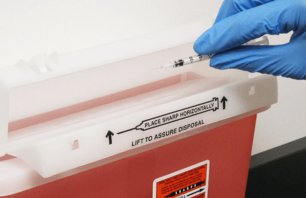Illegal drug use continues to be a problem, contributing to the opioid crisis across the United States. In 2020, the National Survey on Drug Use and Health recorded that 21.4% of people aged 12 or older (or 59.3 million people) used illicit drugs or misused prescription drugs within the last year. Some of the misused prescription drugs are being diverted, which is the redirecting of controlled substances by staff or patients from their intended destination for illicit distribution or use. Healthcare organizations that understand and properly dispose of the controlled substances-related waste that they generate can help to mitigate the risk of potentially addictive drugs being misused.
What is a Controlled Substance?
A controlled substance is any drug that has been scheduled by the Drug Enforcement Administration (DEA). The DEA places substances into one of five schedules. This placement is based upon the substance’s medical use, its potential for abuse, and safety or dependence liability.
Schedule I drugs have a higher potential for psychological and/or physical dependence, whereas Schedule V drugs represent the least potential for abuse. Prescription opioids, such as oxycodone, hydrocodone, and morphine, are controlled substances, and the DEA considers them to be Schedule II substances.
Key Factors of Proper Controlled Substance Disposal and The Differences
There are a few key questions to consider when determining how to dispose of a controlled substance:
- Where was the waste generated? (e.g., at home by an ultimate user vs. at a healthcare facility/DEA registrant)
- What schedule of drug is it? (e.g., Schedule I vs. Schedule II-V)
- Is the controlled substance also a hazardous waste pharmaceutical?
- Is the waste inventory or wastage?
- Inventory means all factory and branch stocks in finished form of a basic class of controlled substance manufactured or otherwise acquired by a registrant.
- Wastage refers to material leftover when a controlled substance has been dispensed by a practitioner for immediate administration at the practitioner’s institutional/registered location pursuant to an order for medication.
It is the waste generator’s responsibility to answer these questions to determine how best to dispose of the material. Healthcare organizations should train their employees on the differences between inventory and wastage, and hazardous and non-hazardous waste, and how to dispose of the material accordingly.
What are Some Healthcare Controlled Substance Disposal Dos and Don’ts
Dos
- Keep stringent documentation of controlled substance inventory through receipt, administration, and disposal.
- Train your staff on the rules and regulations that apply to managing controlled substances and their disposal.
- Consider offering your patients directions to a medication collection kiosk or providing a mail-back disposal program for household medications that may contain Schedule II-V controlled substances.
Don’ts
- Dispose of controlled substances that a patient has brought from home.
- Dispose of controlled substances in:
- Toilet
- Drain/sewer/sink
- Sharps containers
- Medical waste containers
- Regular trash
CsRx Controlled Substance Wastage Program
Stericycle’s CsRx® Controlled Substance Disposal Service is designed to help you mitigate drug diversion and support your organization’s efforts to dispose of controlled substance wastage safely. Stericycle also offers consumer drug and sharps disposal services.



